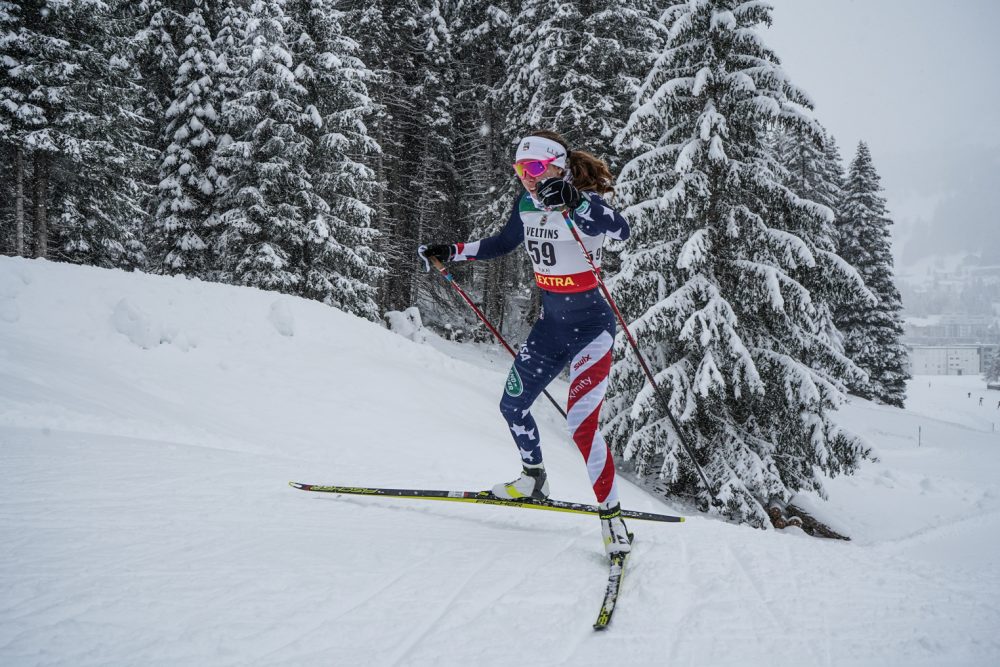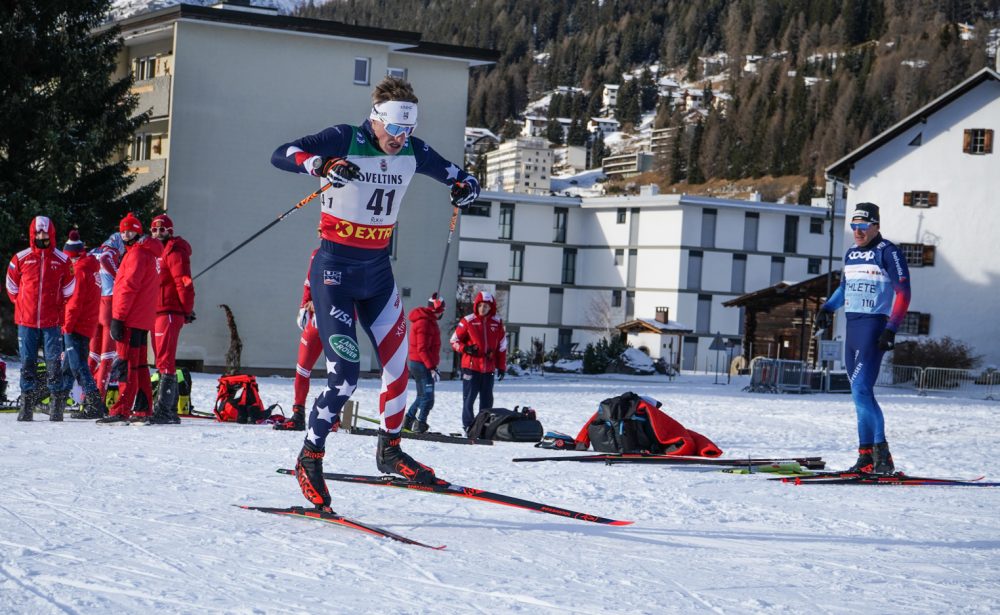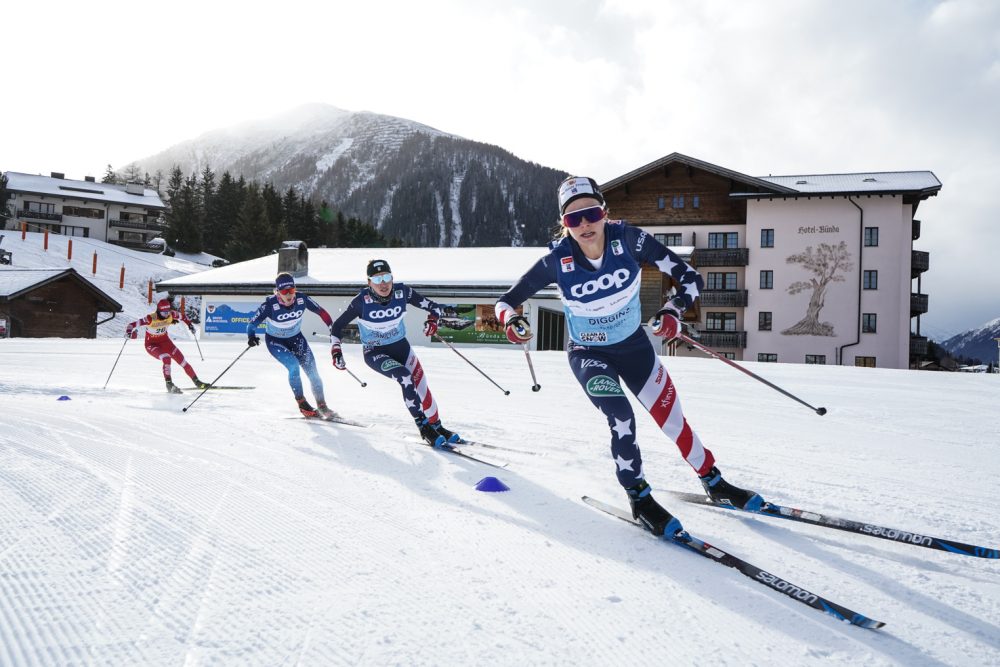
Lillehammer cancels World Cup events. Norway, Sweden, and Finland pull from the World Cup after the opening weekend in Ruka citing COVID safety concerns. To an outsider, these headlines paint a seemingly bleak picture of the start of the race season. However, an international time trial featuring a skate sprint day Friday and distance event Saturday sparked hope for the American team as they remain in Europe focused on the upcoming weekend of racing in Davos, Switzerland.
FasterSkier spoke with U.S. Ski Team head coach Matt Whitcomb to learn more about the event and its role in helping the American team gain on-snow race experience, sharpen their form and find their race gears amidst a stacked field of friendly competitors.
Taking a step back, Whitcomb shared that travel from Ruka to Davos felt both safe and easy. The team booked a flight through a FIS travel agent from Kuusamo, FIN to Munich, GER, then drove the remaining 3.5 hours to Davos. By reserving through FIS, they ensured that the only other passengers on the flight were other world cup athletes, coaches, and techs, who had been tested in order to participate in the opening World Cup events.
“It was probably the safest flight we’d ever been on and it made for a really easy day,” Whitcomb stated.
Athletes were required to obtain a negative test result within 72 hours prior to entering Finland per the country’s border control policies, then were tested a second time upon arrival at the venue in Ruka. This put them inside what Whitcomb called the “World Cup bubble”.
“FIS tracks our daily whereabouts all winter,” wrote Whitcomb in an email for clarification on testing and travel safety precautions. “We fill out a twice-daily questionnaire for U.S. Ski & Snowboard, as well. We did not need [a test 72 hours] before entering Switzerland. As a team policy, we got one anyway. We were tested again upon arrival to Switzerland, and now that we’ve been here one week, we will test the entire team over the next two days.”
In addition to this testing protocol, the U.S. team is operating an agreed upon team health policy regarding behavior, which Whitcomb outlines below.
“Travel and ride with your roommate. No indoor socializing, other than meals. No family visits, no friend visits. Our current hotel has a separate room and buffet line for our team to use. New athletes and staff arriving to the World Cup enter a ‘quarantine bubble’ until they’ve cleared a PCR test, so we eat in two shifts, and two locations.”
Back to the time trial. Whitcomb explained that the idea for the time trial was raised by one of the Italian coaches, who approached Whitcomb about getting together for some intensity in the week leading up to Ruka.
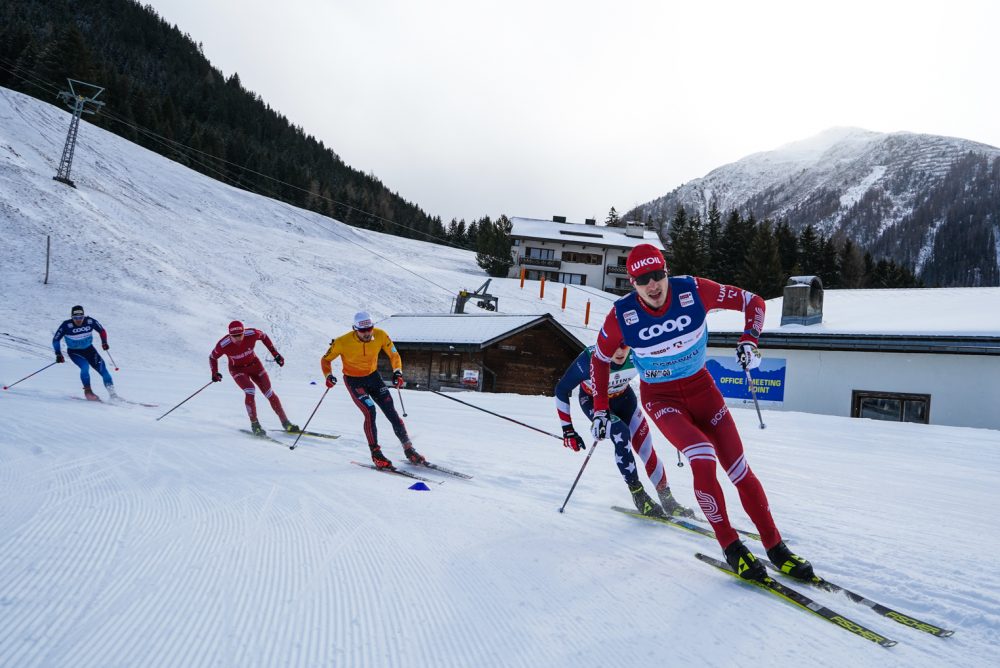
“We’ve had some pretty good joint workouts and camps over these years with these teams, but I think this was probably the coolest where we had five nations with quite a few athletes entered,” he shared.

With names like Federico Pellegrino (ITA), who finished the 2019/2020 season ranked 4th in the sprint standings, Laurien Van Der Graaff (SUI), who has five World Cup podiums, and last seasons overall World Cup Champion Alexander Bolshunov (RUS) on the start list, the concept gained enough traction that some international athletes chose to stay put in Davos for the collaborative workout rather than travel to a nearby Opa Cup race in Goms, SUI.
Through a text thread, the coaches from each nation agreed upon both COVID safety plans and event format, creating an event that Whitcomb described as “easy-going” in terms of the level of planning and logistics required and the relaxed start time. Teams agreed to forgo fluoros, throwing on CH6 or an equivalent. Despite this seemingly casual atmosphere, putting together a group of fiercely competitive athletes ensured that the event would not be all fun and games.
“It was really nice because — you know, it’s low key and people are relaxed, but you show up and people are warming up har,” said Whitcomb. You just had to bring any bib, so everyone threw on bibs and was wearing their national team uniforms. As soon as you’re suited up, it’s game time, and there was not a lot of holding back out there. It was a really valuable day for us and for everybody. The coaches were all really excited at the end of it.”
Whitcomb explained that because the event was for training purposes, the results would not be released publicly. However, the USST Instagram account calls it a Pellegrino (1)–Bolshunov (2)–Schumacher (3) podium for the men. That said, Whitcomb shared that the effort and results of the athletes were universally positive and indicative that strong performances in true race events are on the horizon.
“Every day that we’re actually on snow doing intensity and in particular head to head racing or intervals is really elevating the level of performance on our team. We’re seeing that just in general comments on feelings in intervals, and this particular day — the skate sprint — I think was a good breakthrough for the team. People were starting to feel good. Conditions were really fast and firm — it was that hero snow that we all love to ski on. And people skied fast, so that was the first time that as a group that we skied at an elevated level rather than just having one or two people knocking one out of the park and the rest of the team skiing just okay at best.”
Some noteworthy results he was able to share include Sophie Caldwell winning the sprint qualifier, the American men keeping the time-back margin tight to top qualifier Pellegrino, and impressive performances by Jessie Diggins and Katharine Ogden in the two lap 10-kilometer distance race.
Caldwell’s result was especially encouraging to Whitcomb following what the coach called a “fluke” in Ruka. Finding the last time she had not qualified for the rounds in a sprint event required a lot of scrolling on her FIS athlete profile. Her last time outside the top-30 in qualification happened in Drammen, Norway on March 11th, 2015.
“I think it was a big weight off her shoulders to win the qualifier and just be aware that she’s still the same skier she has been and she’s not suddenly over the hill. I think she can now focus a little bit more without concern that ‘Wow, maybe I’ve overtrained or maybe I’ve really screwed something up here.'”
In her own words, Caldwell shared the following via email.
“I think it’s good practice to get in a race effort, especially when many of us have had so few this year. It was run King’s Court style, so if you won your heat you would move up and if you were last in your heat you would move down. As a result, all the heats were very competitive and well-matched and between three heats and a qualifier it ended up being a very hard day. I was psyched to do my first skate sprint effort on snow and mix it up with some of the girls we will be racing with next weekend.”
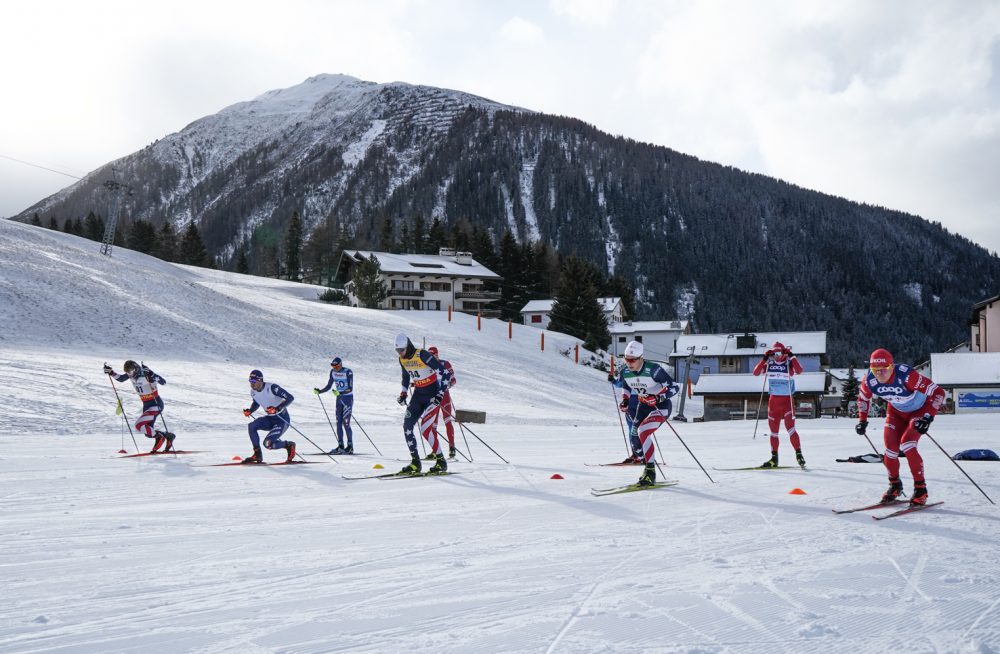
As the upcoming race weekends leading up to the Tour de Ski remain scheduled as planned, Whitcomb does not currently anticipate additional workouts like this taking place. He concluded by reflecting on the impact that the development of these international relationships has had on the growth of the American program and his optimism that it’s example will play for continued domestic development.
“For me, the coolest angle of this whole deal is that as unapproachable as the World Cup once seemed to me, that turns out to be not at all the case these days. It’s really a tight family,” said Whitcomb. “The amount of teams that are working together, even if it’s just transferring bags or borrowing wax, it happens on an almost daily basis when we’re in the same location. I just love seeing the same thing happening back in the US. It’s really going to be about partnerships for the US to succeed moving forward and this really left us with a good feeling.”
Interview with Matt Whitcomb following the international time trial in Davos.

Rachel Perkins
Rachel is an endurance sport enthusiast based in the Roaring Fork Valley of Colorado. You can find her cruising around on skinny skis, running in the mountains with her pup, or chasing her toddler (born Oct. 2018). Instagram: @bachrunner4646

